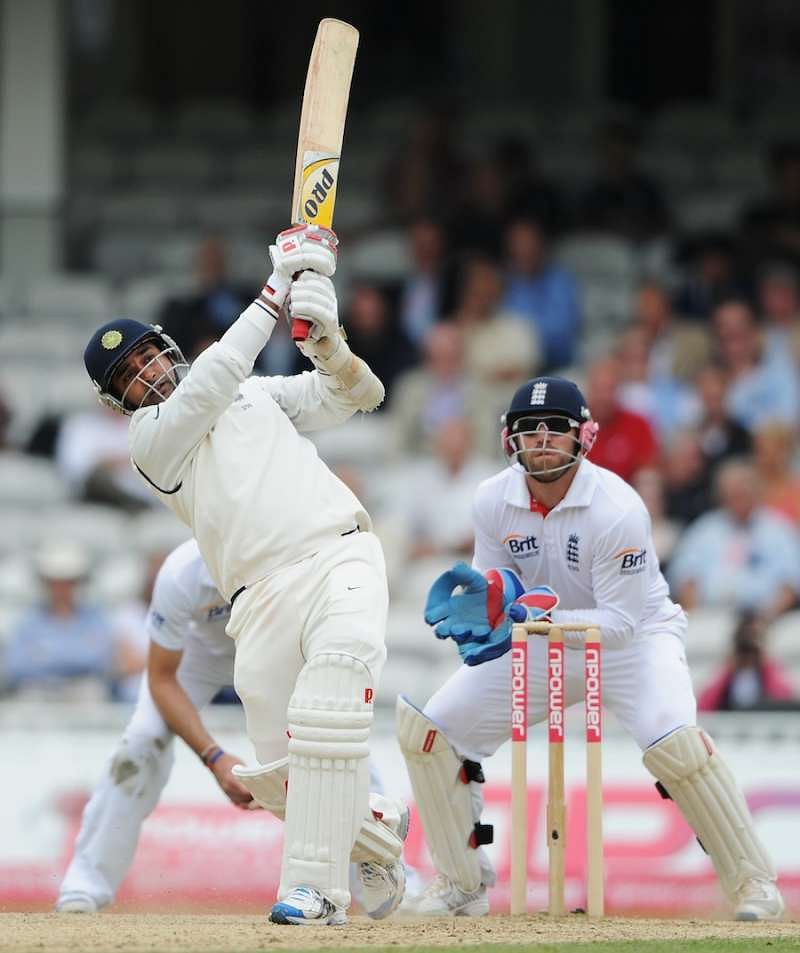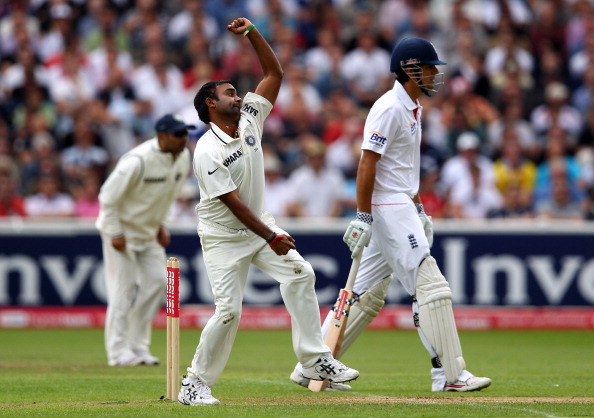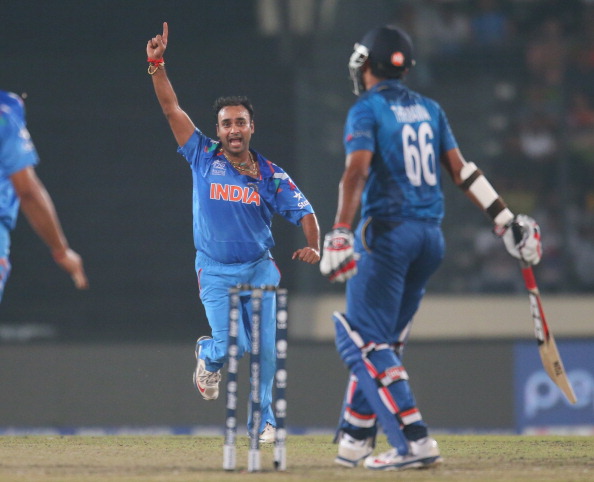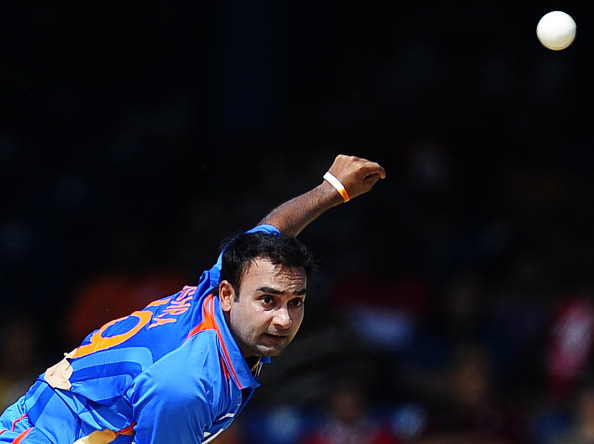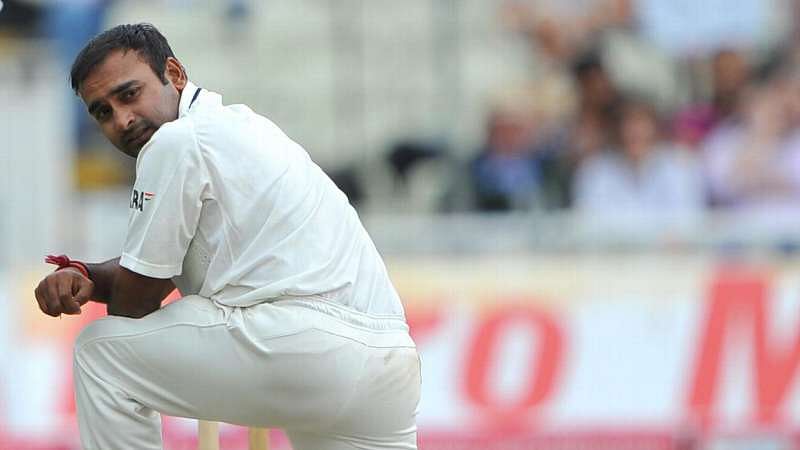
Has Amit Mishra ever been treated justly by Indian cricket?
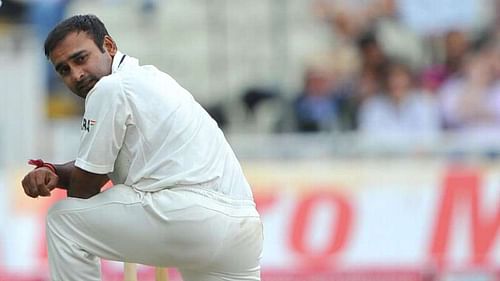
On a cloudy morning at the Kennington Oval in 2011, Amit Mishra walked out to join Rahul Dravid, the lone pillar of strength for India through that series. Little did Mishra know that he would still be at the crease that evening. Mishra stitched together an 87-run partnership with Dravid, contributing 43. Shortly after Mishra departed, India were wrapped up, leaving Dravid stranded.
While following-on, India did not fare any better, with a night-watchman being required for the second time in two days. The previous evening, night-watchman Ishant Sharma had not managed to stay put till stumps and this time, Mishra filled in as night-watchman and saw India through to the close of play on day 4.
Also Read: Amit Mishra vows to take his time before trying to finish the game
The next morning, Mishra outbatted Tendulkar in patches, cutting and sweeping Swann in spectacular fashion and stoutly defending against Anderson. Once again, Mishra was involved in a 144-run partnership, contributing 84. More importantly, the pair had batted out nearly 50 overs, raising hopes of a hard fought draw. One more session stood between India and the ignominy of a 4-0 whitewash.
And yet, on the cusp of tea, the pair departed in quick succession and India folded, losing 7 wickets for 21 runs. Mishra would not wear the Test whites again for nearly four years.
Mishra was the second highest run aggregator for India in that match (after Dravid, of course), but he had gone wicketless the only time England batted. It was one of only two occasions that he has gone wicketless in a Test match. Apart from that tour – where he played only two matches, and one match each against Sri Lanka and South Africa, Mishra has not done badly in any of the other 16 Tests that he has played.
Interestingly, no spinner did any better in any of these four matches, which indicates that these were either dead tracks or that India were up against a very good opposition.
Lack of opportunities
In most cases, he was either brought in as a replacement for a regular spinner and dropped after just one or two average or even good outings. In the three full series that he has played, he was second fiddle to Harbhajan in the first two, and to Ashwin in the third.
It was not as if he performed much worse than those two. But he wasn’t the first choice spinner and therefore, simply ‘expendable’.
Between his Test debut in 2008 and that fateful tour of England in 2011, Mishra played on either dead pitches or against strong, rampaging oppositions. Even in such conditions, he was one of India’s best bowlers despite never having an assured place in the side and having to play as the second spinner.
Since his comeback in 2015, he has looked a better and more mature bowler. The conditions of being second fiddle and having no assured place in the team, however, sadly remain unchanged.
At long last
Mishra left home as a teenager to live his dream of playing competitive cricket. He gave up his education and moved to Haryana, quickly making it to their Ranji squad in 2000, when he was just 18. His skills and hard work were repaid soon, as he made his ODI debut in 2003.
However, Mishra was itching to represent India in Test cricket, for which he had to wait another five long years. He continued to stake his claim in the only way that he knew – by picking up bagfuls of wickets for Haryana in the Ranji trophy. Finally, Mishra got his break, mainly by accident – Kumble got injured in a series against Australia and retired immediately.
Also Read: SK Glossary: What is a googly in cricket?
Mishra was given only one extended run, right after he made his Test debut, where played five Tests and picked up 20 wickets. Harbhajan too picked up exactly 20 wickets during that same period, having played one Test less.
Harbhajan had, however, bowled the same number of overs, despite missing out one Test match, leaving them both with similar strike rates. While Mishra was dropped after this run, Harbhajan got another lease of life despite not having outperformed Mishra by any standard.
| Player | Matches | Overs | Wickets | Ave | SR | 5WI |
| Harbhajan Singh | 4 | 204.1 | 20 | 26.70 | 61.2 | 0 |
| Amit Mishra | 5 | 205 | 20 | 29.65 | 61.5 | 1 |
Mishra made a comeback for one Test against Sri Lanka on a dead Motera pitch in 2009, where the visitors racked up 760 before declaring. The match was a boring draw, but Harbhajan continued on for the series, while Mishra was dropped.
The Delhi spinner was then picked for the first of a two-match series in Bangladesh, where he repaid the faith by picking up seven wickets in favourable conditions (under Sehwag’s captaincy). However, Dhoni returned for the next match and Mishra was replaced with Ojha.
The leg-spinner was then picked for a two-match series against South Africa in 2010. While India capitulated in the first match to lose by an innings, the hosts returned the favour in the second. Both Harbhajan and Mishra did badly in the first Test, but Mishra could only pick four in the second Test, compared to Harbhajan’s eight. This was the only Test match in which he was unable to match the other spinner in the side. Expectedly, he was dropped.
Mishra next donned the Test whites on India’s tour to Sri Lanka in 2010, when both Harbhajan and Ojha did terribly. While he did much better than the other two, he played only the one match and wasn’t picked again until the next year.
The next year, he played in the first Test against West Indies at Kingston, but lost his place in favour of an extra fast bowler. Although he returned better figures than Harbhajan in that match, the latter kept his place for the rest of the series.
Also Read: Shane Warne - The Sorcerer: The last true practitioner of the dying art of leg-spin
India’s next assignment was a tour to England where, after being beaten black and blue in the first two Tests, Mishra was recalled for the next two. Once again, he bowled marginally better than Harbhajan, although his most valuable contribution on that tour was with the bat when he scored 43 and 84 in the final Test. It was a series where, except for Dravid, all the batting stalwarts hadn’t been able to live up to their reputation. Ironically, that was to be Mishra's last match until 2015.
| Player | Matches | Innings | Wickets | BBM | Ave | SR |
| Amit Mishra | 2 | 2 | 3 | 3/150 | 106.66 | 162.0 |
| Harbhajan Singh | 2 | 4 | 2 | 1/69 | 143.50 | 209.0 |
In the four-year interim, Harbhajan had played four more Tests, picking up 10 wickets in them. In Mishra’s comeback match, he partnered Ashwin and Harbhajan. While he bowled the least overs among the three, he picked up five wickets in the match.
Ashwin picked up 10 wickets in that match but bowled nearly double the amount of overs as Mishra. That was Harbhajan’s first and last Test under Virat Kohli’s captaincy. Although Ashwin stole the show in that series, statistics show that Mishra’s contribution was commendable too.
| Player | Matches | Overs | Wickets | BBM | Ave | SR |
| Ravichandran Ashwin | 3 | 115.0 | 21 | 10/160 | 18.09 | 32.8 |
| Amit Mishra | 3 | 79.0 | 15 | 7/72 | 15.00 | 31.6 |
| Harbhajan Singh | 1 | 25.0 | 1 | 1/90 | 90.00 | 150.0 |
In the shorter formats
The lack of opportunities given to Mishra in ODIs is all the more perplexing since he had only played 31 matches before the start of the ongoing series against New Zealand.
He has been India’s best spinner in ODIs since his debut – statistically, at any rate.
A look at how Mishra compares against some of the best Indian spinners in ODIs (ranked by strike rate):
| Player | Matches | Wickets | Ave | SR | Eco | 4+ wickets |
| Amit Mishra | 33 | 57 | 25.45 | 31.9 | 4.78 | 3 |
| R Ashwin | 102 | 142 | 31.73 | 39.2 | 4.85 | 1 |
| Ravindra Jadeja | 126 | 147 | 34.55 | 42.5 | 4.87 | 6 |
| Anil Kumble | 269 | 334 | 30.83 | 43.0 | 4.29 | 10 |
| Harbhajan Singh | 234 | 265 | 33.47 | 46.6 | 4.30 | 5 |
Granted that the pool of numbers is quite small when talking about Mishra, but the fact cannot be denied that he has done exceedingly well whenever he has turned out in ODIs. By strike rate or average, he is miles ahead of any other spinner (among those who have taken at least 25 ODI wickets).
Ranked by best bowling in an innings, he has already taken six wickets in an innings, which is the most by any Indian spinner. In 4+ wicket hauls he stands fifth, but everyone ahead of him has played more than 100 ODIs.
By most standards, he is far ahead of Ashwin, Jadeja, Axar Patel or any of the bowlers that he has had to compete against for a place in the team. He is the fastest Indian spinner to 50 ODI wickets, bettering even Ashwin. Yet, he has played only 34 ODIs since his debut, spread over more than 13 years.
Also Read: Decoding the Yasir Shah conundrum
Of the 32 innings in which he has bowled, Mishra has gone wicketless only six times. The argument that he might go for runs does not hold either, as he has a marginally better economy than both Ashwin and Jadeja.
His figures and statistics in T20Is are as astounding as in ODIs. Sadly though, he has played only eight games, picking up 14 wickets.
As a spinner in the shortest format, his worth has been underlined by his consistent showing in the IPL. Despite having to jump from franchise to franchise almost every year, he has impressed wherever he has played.
Questions about his effectiveness and economy in the shortest format were raised often, but he has silenced his critics with performances.
| Player | Matches | Wickets | Ave | SR | Eco |
| Amit Mishra | 8 | 14 | 13.71 | 12.8 | 6.40 |
| R Ashwin | 45 | 52 | 22.19 | 19.2 | 6.91 |
| Ravindra Jadeja | 39 | 31 | 30.38 | 25.4 | 7.15 |
| Harbhajan Singh | 28 | 25 | 25.32 | 24.4 | 6.20 |
There is no question of Mishra's talent and absolutely no question about his commitment, and there is hardly a question that can be raised about his performances, as has been seen. Why then has he been sidelined for so long and treated with such disdain?
For starters, Mishra chose the worst possible time to try to break into the team as a spinner. He had to wait for Anil Kumble, India’s greatest match-winner, to retire, and for Harbhajan to become ineffective enough to be dropped. Even so, whenever he did play with Harbhajan, he always did as well, if not better. Yet, Harbhajan always won out because of his wealth of experience and his ability to stifle the scoring rate. Harbhajan’s performances often had to be quite horrible for him to be replaced by Mishra.
Also Read: India’s famed spin quartet – the gold standard for hunting in packs
Leg spinners are usually not as accurate as off-spinners, which is a well-established fact. Yet, Mishra displays remarkable control over his deliveries, offering a rank bad ball or a long hop very rarely, if ever. His economy and average, as well as his success in T20 are a testimony to his control on the ball, for his statistics would not be so stellar if he regularly bowled loose deliveries.
While some spinners pride themselves on variety, Mishra restricted himself to using his stock legspinner and an effective googly. Unlike Ashwin’s carrom ball or Harbhajan’s doosra, he does not experiment much. Often, experimenting too much puts a spinner off, as Ashwin found out a couple of years ago when he was trying too much. Mishra uses his stock ball almost all the time, showing that batsmen fall prey to him despite reading his deliveries.
A classical leg spinner
Mishra is a spinner in the classical mould. He isn’t fast through the air, like Kumble, and neither does he attack the stumps religiously, like Jadeja. Unlike most of India’s frontline spinners, he gives the ball a good rip.
His skills, his guile, and his effectiveness lie in his flight, in his turn and in his temperament. There is much to be said about his temperament, because in a format like T20, where he is inevitably hit for sixes, he has so often bounced back to fox those very players who have hit him out of the park.
Under Dhoni, India always looked for a spinner who was adept at stifling the opposition and drying up runs. Harbhajan was a master at this whether he was picking wickets or not. Mishra, on the other hand, encourages batsmen to go after him and that is where his effectiveness lies.
Perhaps a more attacking captain would have preferred Mishra over the other spinners. He has already put up a much-improved performance in Tests since Kohli took over the captaincy. In fact, under Kohli’s captaincy, his stats are better than Ashwin’s.
| Captain | Matches | Wickets | Ave | SR | BBM |
| Dhoni / Kumble / Sehwag | 13 | 43 | 43.30 | 81.3 | 7/106 |
| Kohli | 7 | 28 | 20.64 | 41.1 | 7/72 |
It takes great heart, courage and self-belief to toss the ball up to a batsman, knowing that he is out to hit you. It is so very easy to get under a ball when it is tossed up and not bowled so fast. It wouldn’t be wrong to say that Mishra knows no other way to bowl than to toss the ball up. The ball flying above the batsman’s eye line, and dipping in before ripping off the surface, is enough to warm the connoisseur’s heart – and Mishra has provided plenty of that over the years.
It is unfortunate that Mishra’s golden years coincided with the golden years of Indian cricket. While nothing can be done to rectify that, it is expected that under an attacking captain, Mishra will be looked upon more favourably.
Perhaps his best years in international cricket are still ahead of him. He has the ability, and given the opportunity he can prove himself beyond all doubt on the biggest stage and even shepherd the younger crop, as an experienced senior.
With over 500 first class wickets and an enviable record in the shorter formats, Mishra has justified his decision to focus on cricket as his sole livelihood.
Note: Statistics up to date as of 23rd October, 2016. Statistics include India vs New Zealand at Mohali, 3rd ODI, 23rd Oct 2016.
